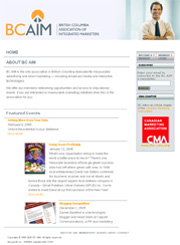Silver Garden Web Studio > Resources
Get Listed on Google
Google is now the most successful search engine in the world, outstripping its rivals so comprehensively that only Microsoft remains a challenge. With that kind of power, it's essential that you stay on the right side of it. Google indexes eight billion web pages, ranked using the company's patented PageRank algorithm. PageRank is a relevance score from one to 10 (with decimal places in between) that decides where you page appears in Google search results.
If your sites are structured well, they're accessible and have concise, relevant content, then you're already halfway there. Sticking to web Standards will give you another boost, with the last push coming from getting your name you there and attracting the external links that are so important in the PageRank formula.
1. Choosing Keywords
Google returns results from pages featuring keywords entered in its search box. To get into those results, you need to determine your keywords.
Google employs a ranking system to decide the order in which sites are returned, and keyword relevance is one of the primary components in that system. Essentially then, keyword optimization is all about skewing those results in your favour.
2. Make Sites Accessible
Sticking to web standards and the principles of accessible web building will help ensure that your site ranks highly.
Start by making sure that images in your site are correctly and descriptively labelled throughout. Also ensure that every page in your site has its descriptive title. If you can include one or more of your keywords in that title in a way that doesn't seem forced, then that's even better.
Hyperlinks should be clear and easy to follow, too. If your human visitors can find them, then Google can. This means making sure that there are text alternatives to all navigation options - and that images used for navigation are properly labelled using the 'alt' parameter. There should also be an adequate and clear description of content in the body of the page, too.
3. Optimizing Content
True Search Engine Optimization is based on your content. Poor spelling and grammar will decrease the probability that your site will appear high up in Google's search results. It's also important to bin the jargon, so aim to create content that's written in clear English.
SEO experts recommend that between 5 to 15% of the textual content of an optimized page should be keywords included naturally in your content. And just adding a list of keywords to a page will make your ratings plummet.
4. Make Sites with a Simple, Clean Structure
Make it easy for Google to index your page, with a simple, clean site structure.
The key here is to be organized. Arrange the content of your site into distinct categories and make sure that each category is accessible through your primary navigation system. Your front page should provide direct access to each category, and to choice content within those categories.
To help keep URLs shorter on static sites, you can store pages from each category in separate, descriptively named directories, and include an index file in each category with a frequently updated list of all content - like a mini sitemap. Bloggers will be familiar with the technique of listing archived pages in a navigation sidebar, and most content management systems enable you to generate those lists automatically.
5. Use CSS Page Layout will Help Google Index your Site
Your pages are indexed in the same way a person reads, from top to bottom - so important content should go near the top. A common layout problem is cluttered code preventing spiders from finding your content. Table, for example, make life difficult for Google - and nested tabled's add to its woes. As for frames, Google only copes well with frame-based pages when they're well formed and conform to standards. This means embedding your full page content in the No Frames section as text. We'd advise using CSS to layout pages, separating form from content.

